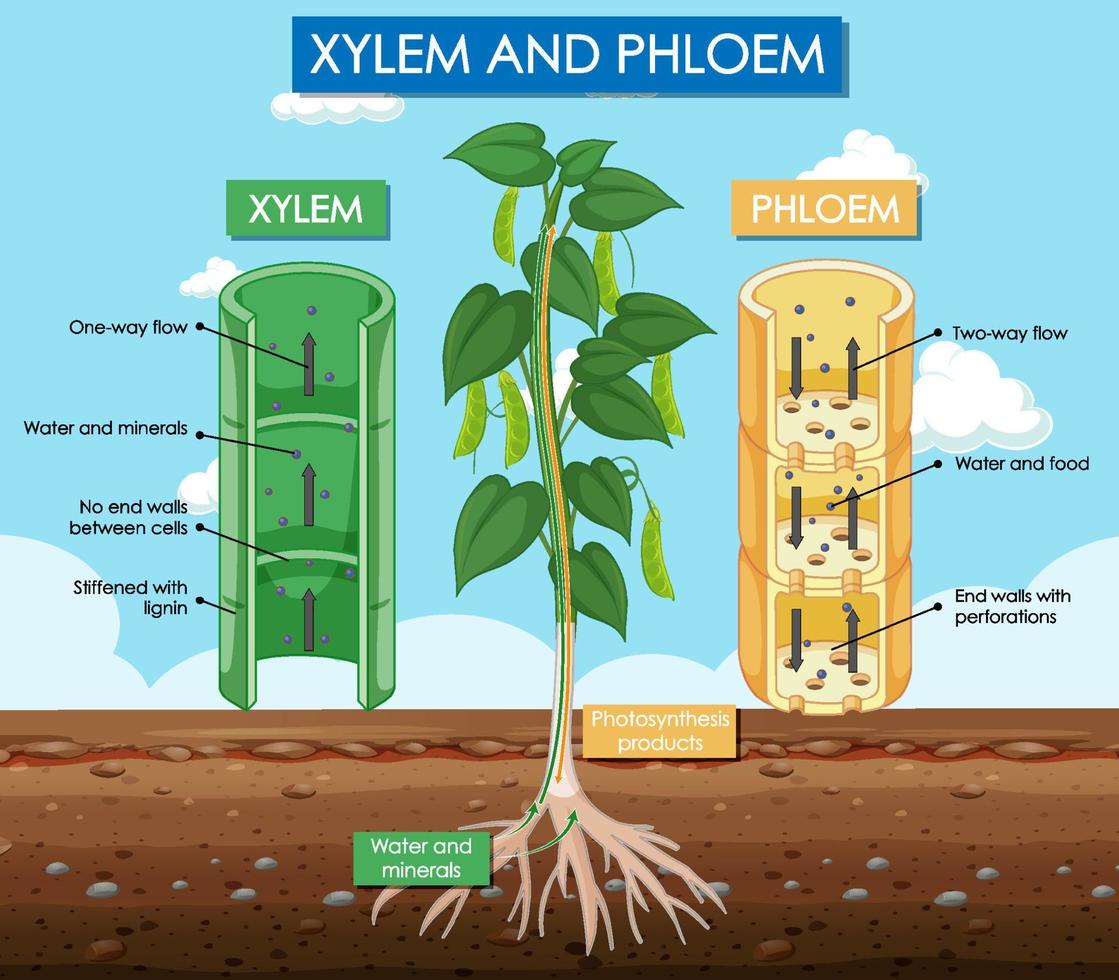How is food transported in plants?
In plants, food synthesized during photosynthesis is transported through the phloem tissue, a type of vascular tissue. This process, called translocation, moves carbohydrates, primarily as sucrose, from areas of production (like mature leaves) to areas of need or storage (roots, seeds, fruits). The phloem utilizes energy from ATP to move the sugar into sieve tubes, increasing pressure and causing water to enter via osmosis. This pressure difference then pushes the sugar-water solution to other parts of the plant.
Here’s a more detailed explanation:
Phloem: The Transportation System:
Phloem is a complex tissue composed of sieve tubes and companion cells, responsible for transporting sugars and other organic molecules.
Source and Sink:
The leaves are the main source of food, while roots, developing fruits, and storage organs are the sinks.
Loading Sugars:
Sugars produced in leaves are loaded into the sieve tubes of the phloem.
Water Intake:
Water enters the sieve tubes due to the high sugar concentration, increasing the pressure.
Pressure Gradient:
The pressure created in the phloem drives the movement of the sugar-water solution to areas of lower pressure, such as the roots or developing fruits.
Bidirectional Transport:
The translocation of food in phloem can occur in both upward and downward directions, depending on the plant’s needs.
Energy Requirements:
The process of loading sugars into phloem and maintaining the pressure gradient requires energy, primarily in the form of ATP.
Food is transport through the phleom in the plant from leaf to other part of the plant and from storage organ to the needed part of the plant

In plants, food produced during photosynthesis is transported through the phloem, a vascular tissue. This process is called translocation and involves moving sugars (like sucrose) from source tissues (like leaves) to sink tissues (like roots, fruits, or developing tissues). The movement is facilitated by energy from ATP, which increases osmotic pressure, drawing water into the phloem and creating a pressure gradient that pushes the food solution through the plant.
Here’s a more detailed explanation:
Phloem:
The phloem is a complex tissue composed of sieve tubes and companion cells. Sieve tubes are elongated cells that form a continuous pathway for food transport, while companion cells provide support and regulate sieve tube function.
Sucrose Transport:
The food, primarily in the form of sucrose, is loaded into the sieve tubes of the phloem by using energy from ATP.
Osmosis and Pressure:
As sucrose enters the sieve tubes, water moves into them by osmosis, increasing the pressure within the phloem.
Pressure Gradient:
The high pressure in the source tissue pushes the food solution (sucrose) through the phloem to areas of lower pressure, which are the sink tissues.
Bidirectional Transport:
The phloem can transport food both upwards (from leaves to roots) and downwards (from fruits or flowers to roots) depending on the plant’s needs.
Phloem also known as food transportation in plants is from one place to another in a process known as translocation.
– This is made possible by what is termed the pressure-flow theory. Sugars mainly sucrose are produced at the sites of their Photosynthesis (source) and are made to move into the phloem.
– To achieve this, a high solute in the phloem should exist. Thus, water will move into the phloem from the xylem directly surrounding it by osmotic pressure. This pressure difference always moves the sugar solution towards the plus (roots, fruits, and storage organs).
– Sugars are removed for consumption or storage at the plus and water also leaves the phloem which reinforces the flow progression.